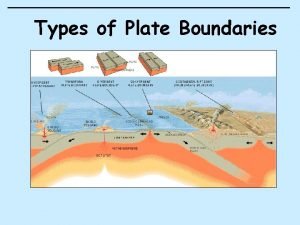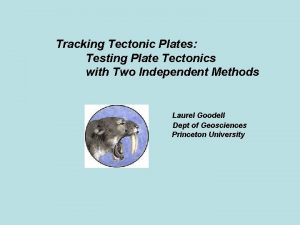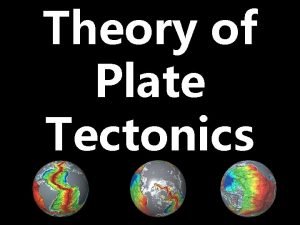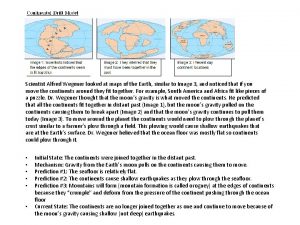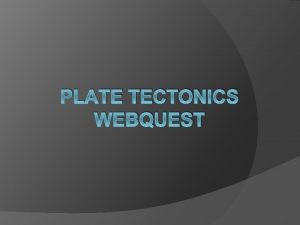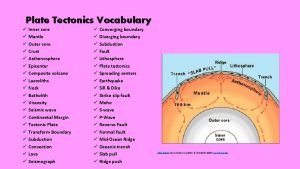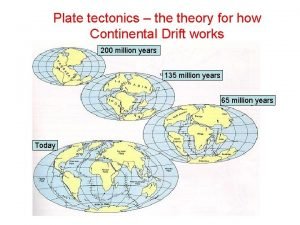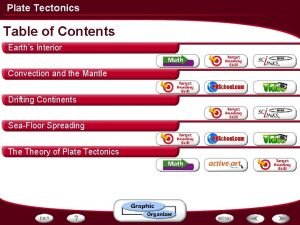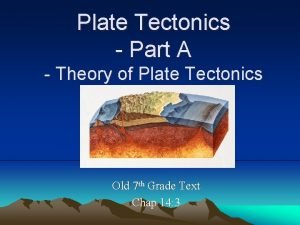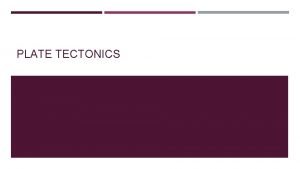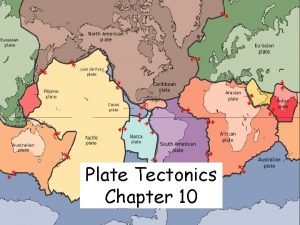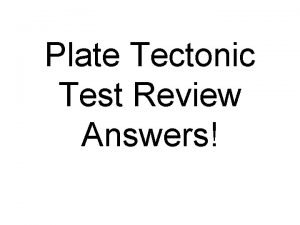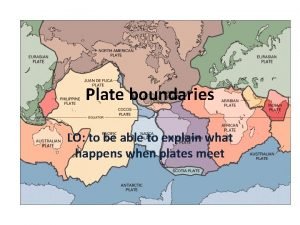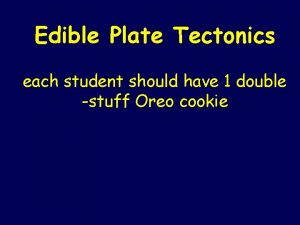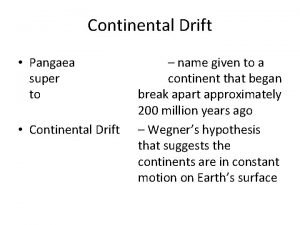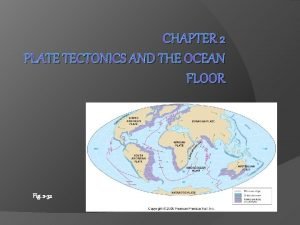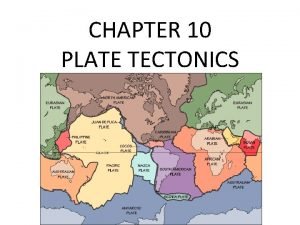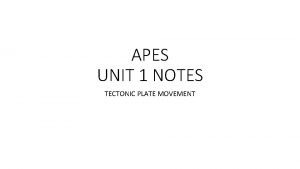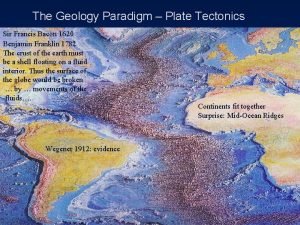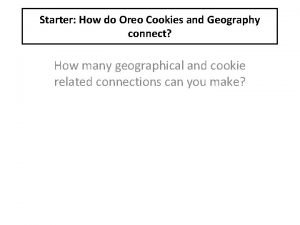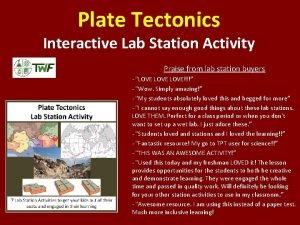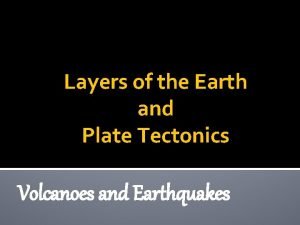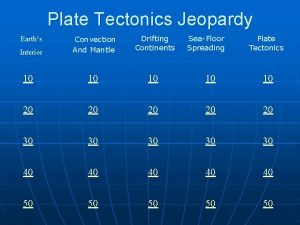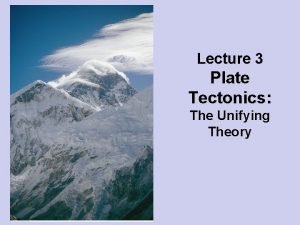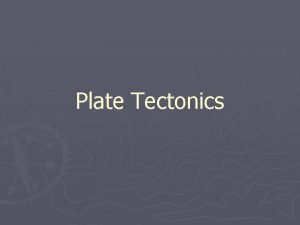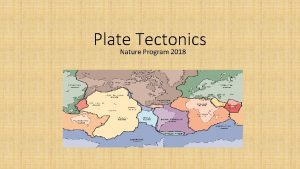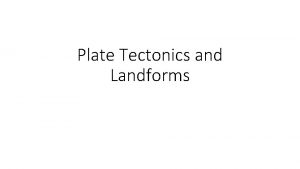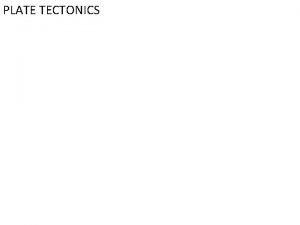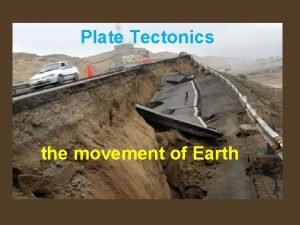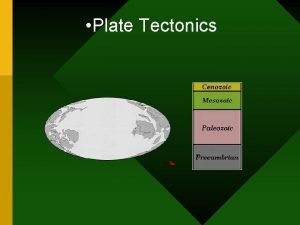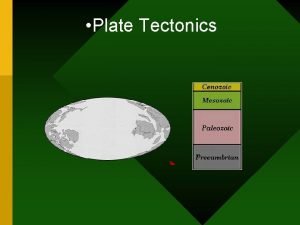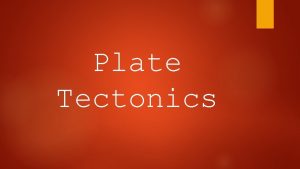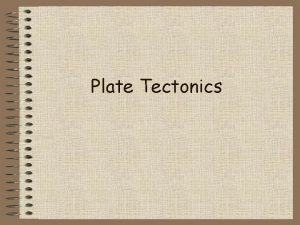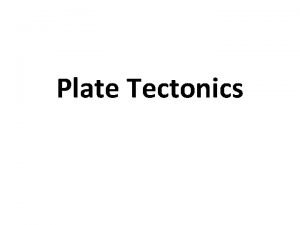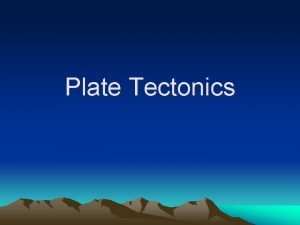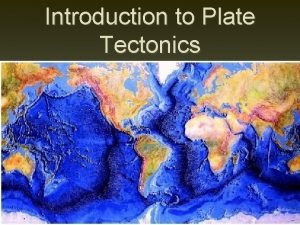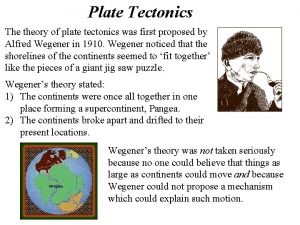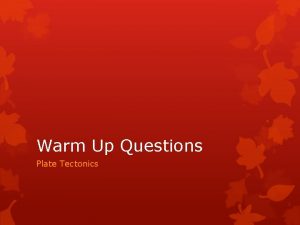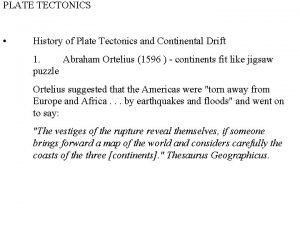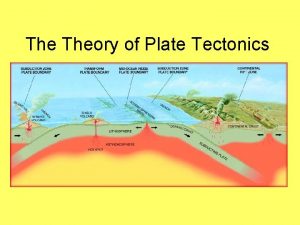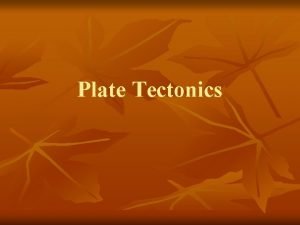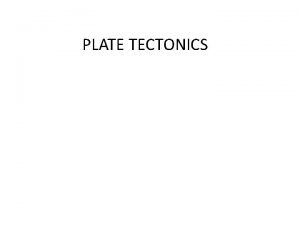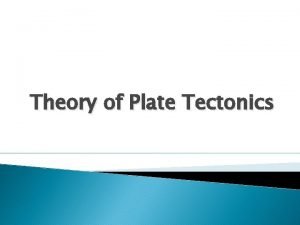The Changing Earth Plate Tectonics Earth Has Several






























- Slides: 30

The Changing Earth Plate Tectonics

Earth Has Several Layers


Earth’s layers have different properties. Earth’s Layer Composition Temperature Thickness Inner Core solid metals 7000 -8000°C 2400 km diameter Outer Core liquid metals 4400 -6100 °C 2300 km thick Mantle heated rock 870 -4400 °C 2900 km thick Crust Cooler rock 0 -700 °C 6 -70 km thick

Continued § Earth’s crust and the top of the mantle form the lithosphere.

The lithosphere is made up of many plates.

Continued § The lithosphere is split into large and small slabs of rocks called tectonic plates, which fit together like a jigsaw puzzle. § Most large plates contain both continental and oceanic crust.


Continents Change Position Over Time.

Continents join together and split apart. § Alfred Wegener proposed theory of continental drift in early 1900’s § All continents were once joined and gradually moved apart (still moving). § Fossils, studies of ancient climates, and rock formations provide evidence. § Africa and Brazil have matching rock formations indicating they were once joined.

Plates Move Apart

Wegner used fossil evidence to support his continental drift theory.

Continued: Sea Floor Spreading

The sea floor spreads apart at divergent boundaries. § Sea floor spreading occurs at divergent boundaries in the ocean.

Continued § Old crust gets pushed aside and the sea floor slowly spreads apart. § Earth DOESN’T get larger because oceanic crust is destroyed along deepocean trenches, where the oceanic plates sink.


Tectonic plates have different boundaries. § Plate boundary: where the edges of two plates meet § Divergent Boundary: occurs where plates move apart, usually found in the ocean § Convergent Boundary: occurs when plates push together. § Transform Boundary: occur when plates scrape past each other.

Divergent Boundary Convergent Boundary Transform Boundary


Continents split apart at divergent boundaries. § Divergent boundaries on continents produce rift valleys. § Magma rises through cracks and forms volcanoes.


Hot spots can be used to track plate movements. § Hot Spot: an area of volcanic activity that develops above where magma rises in a plume from the mantle. § Can be used to measure plate movement because it generally stays in one place as the tectonic plate above it moves. § Can provide a fixed point for measuring the speed and direction of plate movements.

The Hawaiian islands are located in the middle of the Pacific Plate. The largest island, Hawaii, is still over the hot spot.

When the plate moves on, it carries the first volcano away from the hot spot. Heat from the mantle plume will then melt the rock at a new site, forming a new volcano.

Plates Converge or Scrape Past Each Other.

See Page 32

Tectonic plates scrape past each other at transform boundaries. § Two plates move past each other in opposite directions. § No crust is formed or destroyed. § Occurs on the sea floor and on land.

The San Andreas Fault is a transform boundary and moves about 1 inch per year.

See Page 35 Boundaries are formed when tectonic plates move. The direction of the movement determines the type of boundary.

The theory of plate tectonics helps geologists today. § The plate tectonics theory enables geologists to understand how Earth’s continents and ocean basins formed. § Helps scientists predict earthquakes and volcanic activity.
 Plate tectonics vs continental drift
Plate tectonics vs continental drift There are four types of plate boundaries
There are four types of plate boundaries Plate motion calculator
Plate motion calculator The plate tectonics theory states that
The plate tectonics theory states that Convergent boundary divergent boundary transform boundary
Convergent boundary divergent boundary transform boundary Compare continental drift and plate tectonics
Compare continental drift and plate tectonics Plate tectonics webquest pdf
Plate tectonics webquest pdf Plate tectonics vocabulary
Plate tectonics vocabulary Magnetic reversals
Magnetic reversals Plate tectonics
Plate tectonics Plate tectonics definition
Plate tectonics definition Driving force of plate tectonics
Driving force of plate tectonics What is this process called
What is this process called Summarize the theory of plate tectonics
Summarize the theory of plate tectonics Harry hess and seafloor spreading
Harry hess and seafloor spreading Continental drift vs plate tectonics
Continental drift vs plate tectonics Mantle magma
Mantle magma Blank tectonic plate map
Blank tectonic plate map Oreo cookies and plate tectonics
Oreo cookies and plate tectonics A plate tectonics puzzle worksheet answer key
A plate tectonics puzzle worksheet answer key From now
From now Fossils as evidence of continental drift
Fossils as evidence of continental drift Apes frq plate tectonics
Apes frq plate tectonics Francis bacon plate tectonics
Francis bacon plate tectonics Oreo plate tectonics
Oreo plate tectonics Plate tectonics interactive lab
Plate tectonics interactive lab Oreo plate tectonics
Oreo plate tectonics Plate boundaries song
Plate boundaries song Lithosphere definition
Lithosphere definition Plate tectonics game board
Plate tectonics game board Unifying theory of plate tectonics
Unifying theory of plate tectonics

